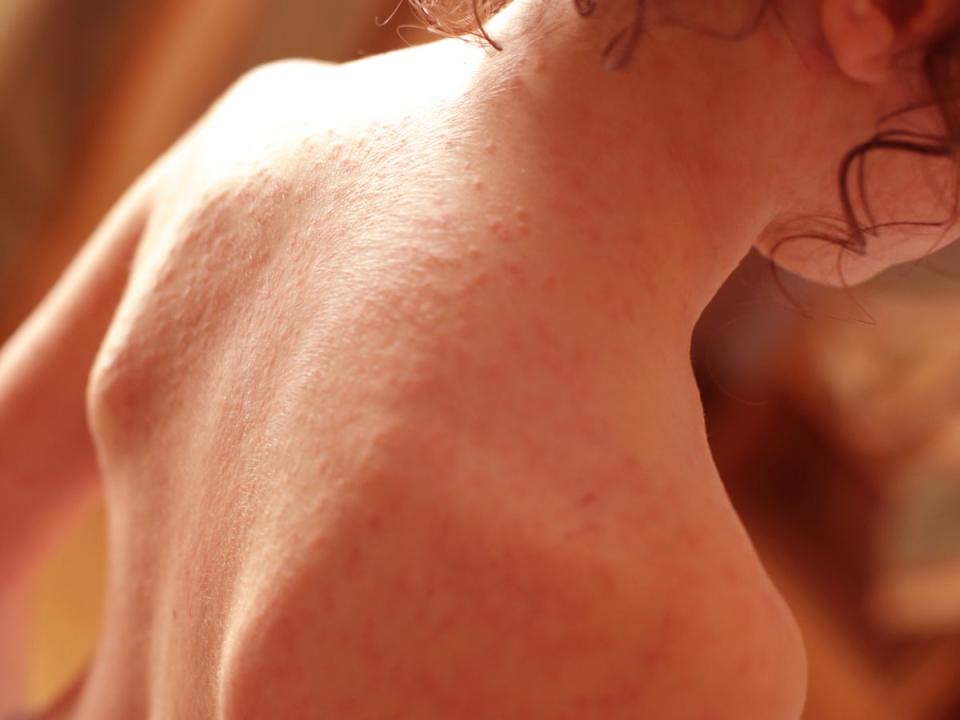Dangerous infection soars to record levels in Japan and experts can’t explain why

A deadly infection is spreading in Japan at a startling rate, with experts unable to work out why.
Streptococcal A, commonly known as Strep A, is known for causing strep throat in children. But a more severe form of the bacteria can lead to complications such as Streptococcal Toxic Shock Syndrome (STSS).
The number of cases of the most severe form of streptococcus reached level highs last year with 941 confirmed cases of STSS, according to Japan Times.

However, the number of cases this year is already expected to surpass this record, with 378 cases recorded in the first two months of 2024.
Strep A infections are spread through close contact with an infected person, they can also be passed on through coughs, sneezes and wounds, the NHS explains.

Some people have the bacteria in their body but are asymptomatic, but can still pass it on to infect others.
The National Institute of Infectious Diseases (NIID) told The Guardian: “There are still many unknown factors regarding the mechanisms behind fulminant (severe and sudden) forms of streptococcus, and we are not at the stage where we can explain them.”
What is Strep A?
Strep A is a common type of bacteria, which lives in the throat and on the skin, it is usually easily treated, but some infections are more serious, the NHS explained.
Milder infections caused by Strep A include scarlet fever, impetigo cellulitis and laryngitis which are all treatable with antibiotics, according to the UK Health and Security Agency (UKHSA).

More serious infections come from a more invasive group of Strep A known as iGas.
The most severe form of the infection is STSS, of which symptoms include fever, chills, muscle pain, nausea and vomiting, according to the USA’s centre for disease control.
In the most severe occurrences, STSS progresses to sepsis, organ failure and necrosis - also known as “flesh-eating disease”.
The fatality rate of STSS is 30 per cent, according to the Guardian.
How to stop the spread
To reduce the chance of catching or spreading an infection: people should avoid close contact with infected people, practice frequent handwashing, use a tissue to cover their nose and mouth after coughing or sneezing and bin tissues quickly after use.
Why has Japan seen a rise?
According to some experts, the rapid surge in cases is connected to the lifting of restrictions during the Coronavirus pandemic.
Covid-19 was downgraded to the same severity category as seasonal flu in May 2023, which led the once vigilant population to become more lax, Ken Kikuchi, a professor of infectious diseases at Tokyo Women’s Medical University told The Guardian.

He said: “In my opinion, over 50 per cent of Japanese people have been infected by Sars-CoV-2 [the virus that causes Covid-19].
“People’s immunological status after recovering from Covid-19 might alter their susceptibility to some microorganisms. We need to clarify the infection cycle of severe invasive streptococcal pyogenes diseases and get them under control immediately.”
Common symptoms of strep A include:
Flu-like symptoms, such as a high temperature, swollen glands or an aching body
Sore throat (strep throat or tonsillitis)
A rash that feels rough, like sandpaper (scarlet fever)
Scabs and sores (impetigo)
Pain and swelling (cellulitis)
Severe muscle aches
Nausea and vomiting


